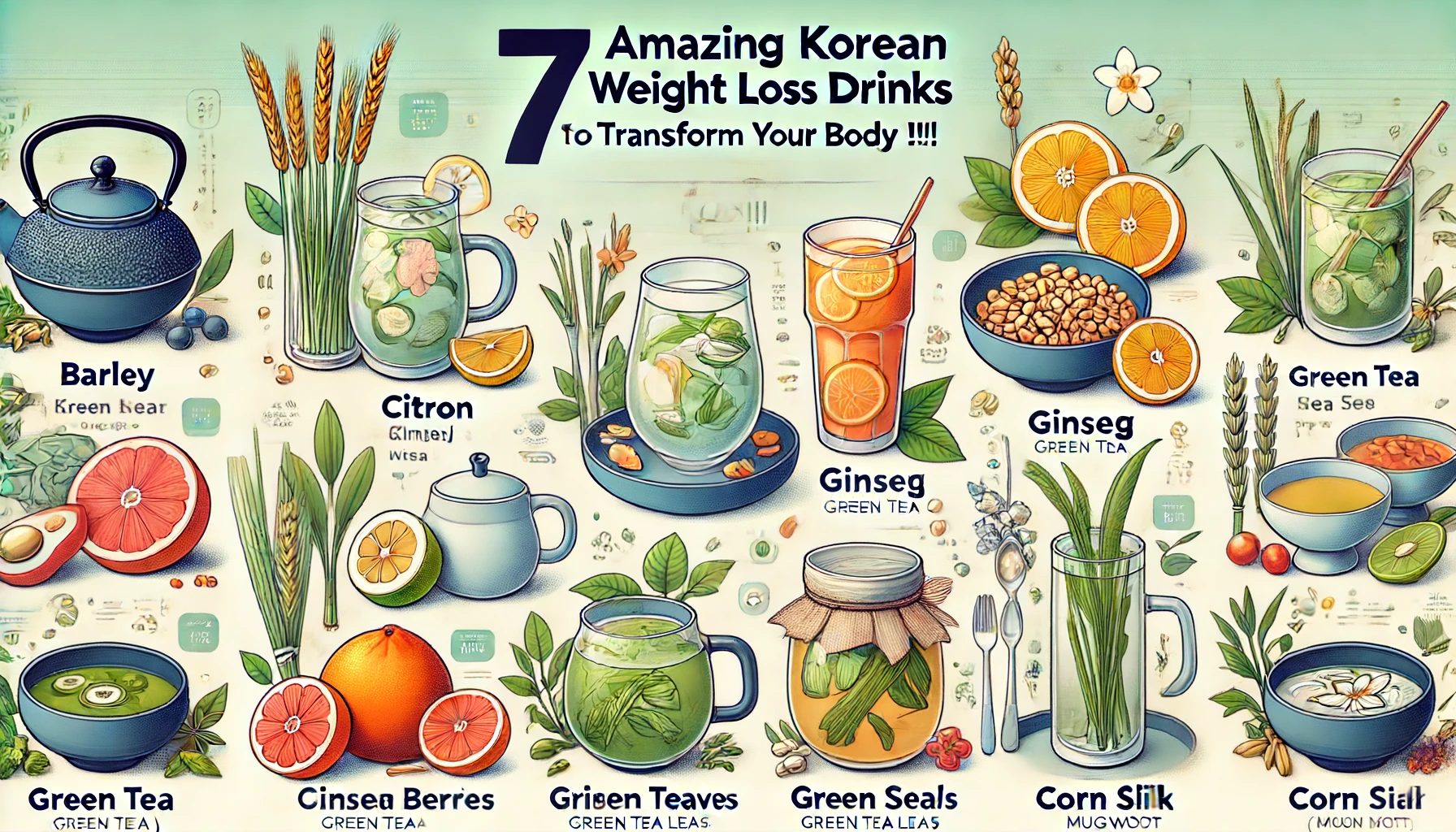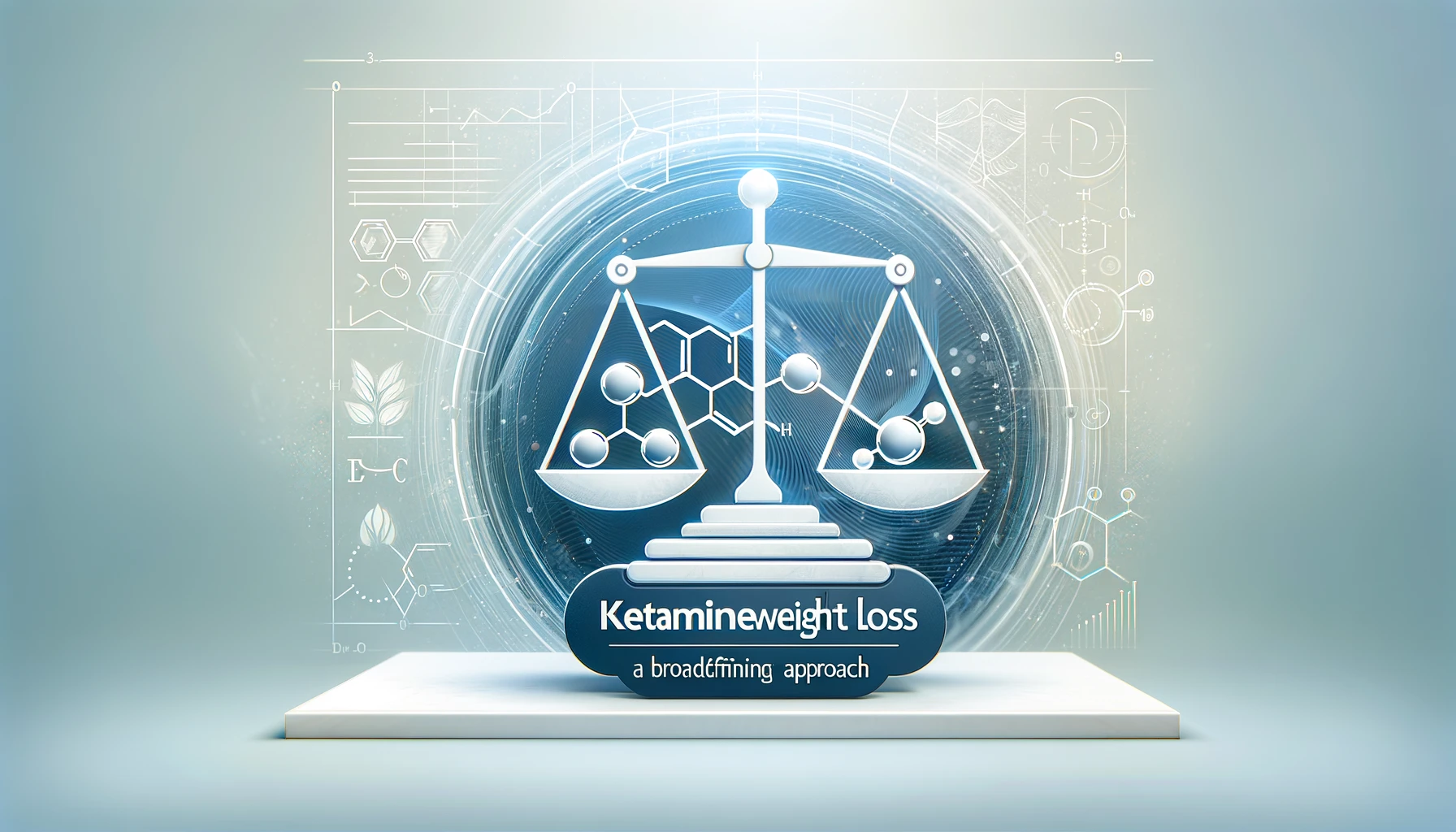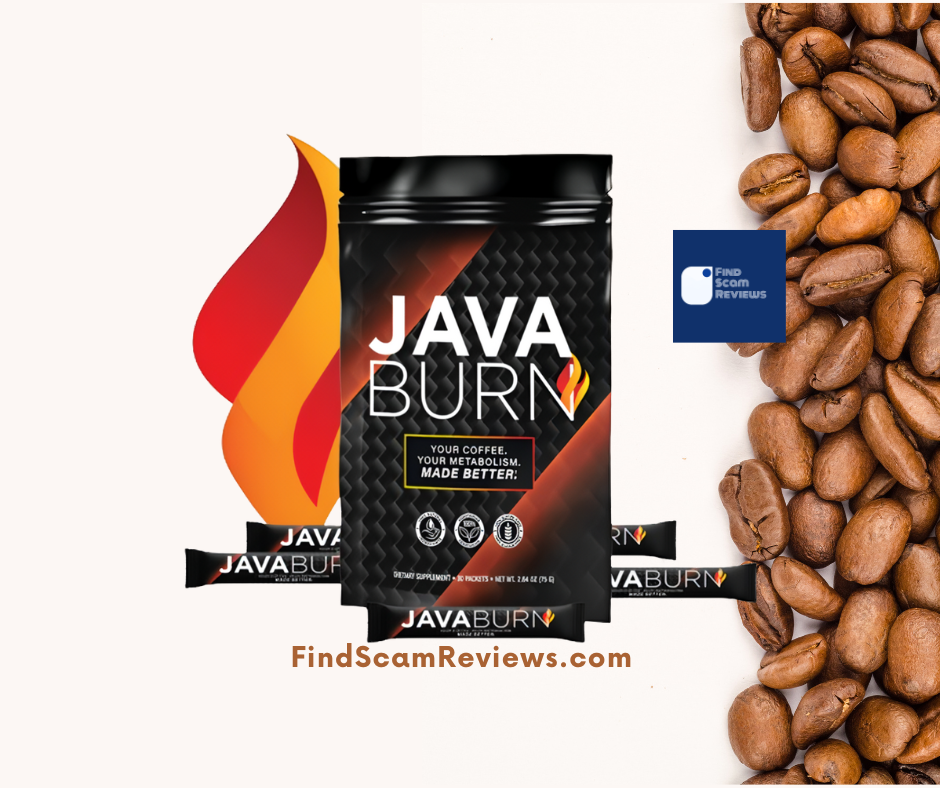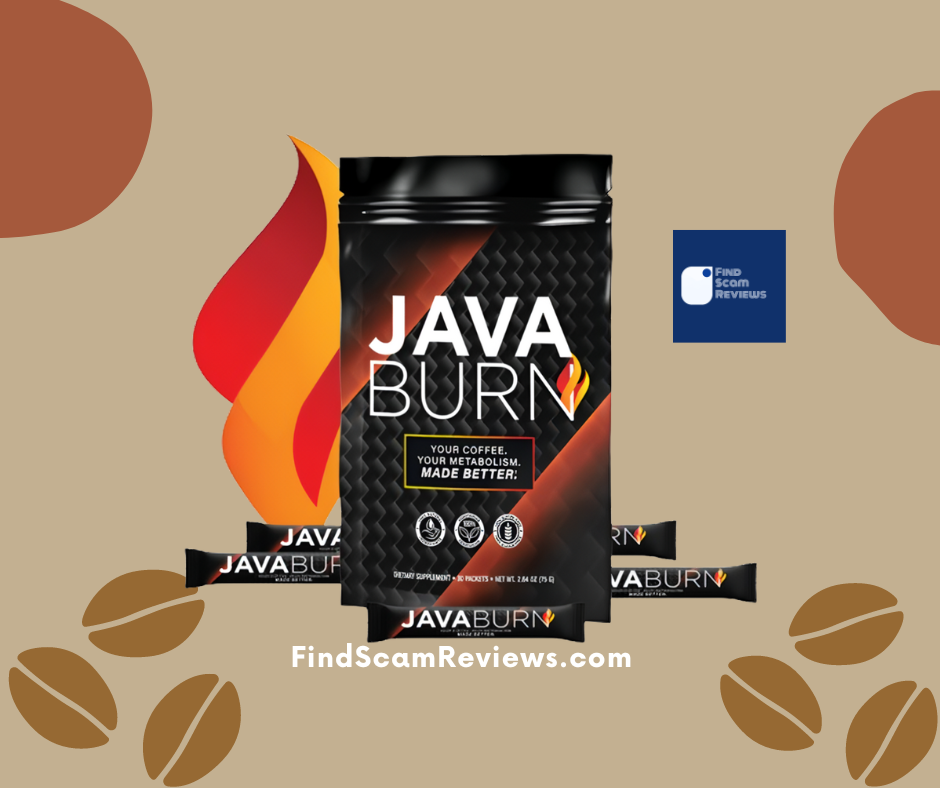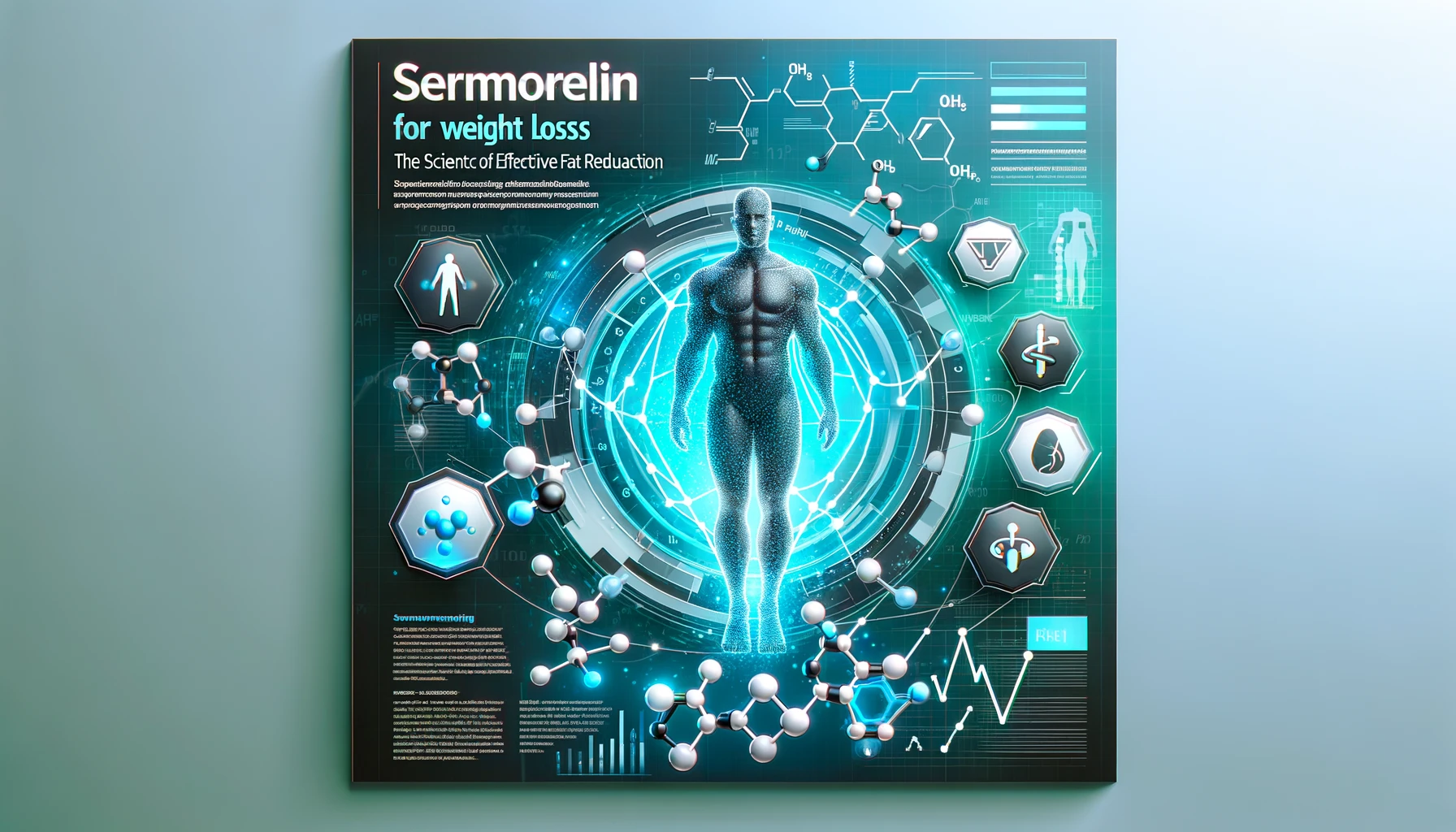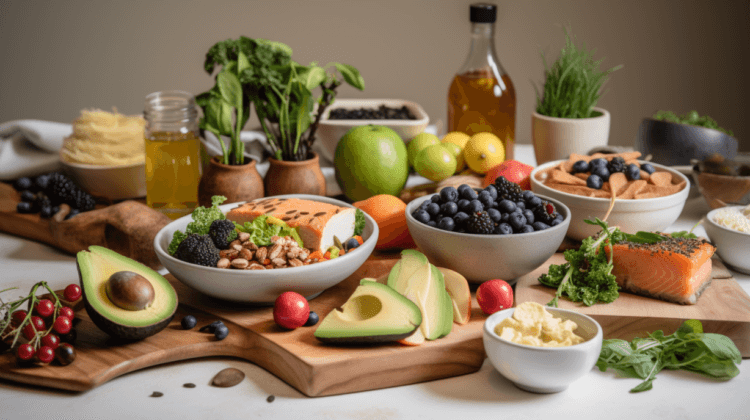
Optivia Weight Loss: Unlock the Secret to a Healthier You!
Finding an effective weight loss solution can be challenging in today’s fast-paced world. With countless diet plans and programs available, choosing the right one for your needs can be overwhelming.
The Optivia weight loss (Optavia) program has gained popularity recently for its comprehensive approach, offering a structured diet plan, one-on-one coaching, and community support. This article will delve deeper into the Optivia program, its components, effectiveness, and potential challenges to help you determine if it’s the right fit for your weight loss journey.
Optivia Weight Loss Basics
The Optivia (Optavia) diet is a weight loss program that combines pre-packaged, low-calorie meal replacements known as “Fuelings” with homemade, low-carb meals called “Lean & Green” meals. The program aims to create a calorie deficit, encouraging your body to burn stored fat for energy. The diet emphasizes high-protein foods, which can help you feel full and maintain muscle mass while shedding pounds. Here, we break down the essential components of the Optivia diet:
Fuelings
Fuelings are meal replacements designed by dietitians, scientists, and physicians to be low in calories and carbohydrates while providing essential nutrients. They come in various forms, such as bars, shakes, and snacks, and are consumed multiple times throughout the day as part of the Optivia program.
Lean & Green Meals
Lean & Green meals are homemade, low-carb, and high-protein meals you prepare. These meals typically contain a poor protein source (e.g., chicken, fish, or tofu), healthy fats (e.g., olive oil or avocado), and several servings of non-starchy vegetables. The Optivia program provides guidelines and recipes to help you create satisfying and nutritious Lean & Green meals.
5 & 1 Plan
The 5 & 1 Plan is the initial phase of the Optivia diet, where you consume five Fuelings and one Lean & Green meal daily. This phase aims to create a calorie deficit, allowing your body to enter a peaceful fat-burning state while preserving lean muscle mass.
3 & 3 Plan
The 3 & 3 Plan is the maintenance phase of the Optivia diet, which focuses on long-term weight management and overall well-being. In this phase, you consume three Fuelings and three Lean & Green meals daily, helping you maintain a healthy weight and continue practicing healthy habits.
One-on-One Coaching
The Optivia program provides one-on-one coaching through Independent Optivia Coaches. These coaches offer guidance, support, and personalized advice throughout your weight loss journey, helping you stay on track and achieve your goals.
Community Support
Optivia fosters a supportive community of like-minded individuals who share similar goals. This community provides real-time encouragement and motivation, enabling you to stay committed to your weight loss plan and achieve lasting results.
Habits of Health Transformational System
The Habits of Health Transformational System is integral to the Optivia program, designed to help you develop lifelong healthy habits. This system ensures long-term success in weight management and overall well-being by promoting positive lifestyle changes beyond dieting.
Combining these components, the Optivia diet offers a comprehensive approach to weight loss, providing the structure, guidance, and support needed to achieve your goals and maintain a healthy lifestyle.
Fuelings: Optivia Weight Loss
Fuelings are an essential component of the Optivia diet, as they serve as convenient, nutrient-dense meal replacements designed to help you achieve your weight loss goals. Here, we will explore Fuelings in more detail to understand their purpose, variety, and nutritional benefits.
Purpose of Fuelings
Fuelings primarily aim to provide low-calorie, low-carb, and high-nutrient meal replacements that promote a calorie deficit for weight loss. They are specially designed by dietitians, scientists, and physicians to ensure you receive the necessary nutrients while cutting back on calories and carbohydrates.
Variety of Fuelings
Optivia offers a wide range of Fueling options to cater to different tastes and preferences. Some popular Fueling choices include:
- Bars: Nutritious snack bars are available in various flavors like chocolate, peanut butter, and fruit.
- Shakes: Protein-packed shakes come in flavors like chocolate, vanilla, and strawberry.
- Biscuits: Crunchy biscuits are perfect for a quick and satisfying snack.
- Soups: Warm and comforting soups are available in flavors like chicken noodle, tomato, and creamy broccoli.
- Brownies: Decadent chocolate brownies that allow you to indulge while staying on track with your diet.
Nutritional Benefits
Fuelings are formulated to balance macronutrients (protein, carbohydrates, and fat) and micronutrients (vitamins and minerals) to support your weight loss journey. Some critical nutritional benefits include:
- High Protein: Fuelings are high in protein, which helps you feel full, preserves lean muscle mass, and aids in weight loss.
- Low Calorie: By offering low-calorie options, Fuelings contribute to the calorie deficit necessary for weight loss.
- Portion Control: Fuelings are pre-portioned, which helps with portion control and prevents overeating.
- Fiber: Many Fuelings contain dietary fiber, which can help digestion and satiety.
- Vitamins and Minerals: Fuelings are fortified with essential vitamins and minerals to ensure you receive the necessary nutrients while following the Optivia diet.
Convenience
Fuelings offer convenience for those with busy lifestyles, as they are easy to carry and require minimal preparation. This feature simplifies sticking to the diet plan and maintaining consistency in your weight loss journey.
In conclusion, Fueling plays a crucial role in Optivia weight loss by providing convenient, nutrient-dense meal replacements that support weight loss. With a wide variety of options available, Fuelings can help you stay on track with your diet plan and achieve your weight loss goals.
Lean & Green Meals: Optivia Weight Loss
Lean & Green meals are a vital part of the Optivia weight loss, as they balance homemade, nutritious, and satisfying meals that complement the pre-packaged Fuelings. This section will examine the components, benefits, and guidelines for preparing Lean & Green meals.
Components of Lean & Green Meals
A typical Lean & Green meal consists of the following features:
- Lean Protein: A serving of a lean protein source such as chicken, fish, tofu, or lean cuts of beef or pork. The protein should be cooked using a healthy method, such as grilling, baking, or broiling.
- Non-Starchy Vegetables: Several servings of non-starchy vegetables, such as leafy greens, broccoli, cauliflower, or bell peppers. These vegetables provide essential nutrients and fiber for overall health and weight loss.
- Healthy Fats: A serving of healthy fats, such as avocado, nuts, seeds, or olive oil, to promote satiety and provide essential fatty acids.
Benefits of Lean & Green Meals
Lean & Green meals offer various benefits that contribute to the success of Optivia weight loss:
- Nutrient-Dense: By incorporating lean proteins, non-starchy vegetables, and healthy fats, Lean & Green meals balance essential nutrients to support overall health and weight loss.
- Satiety: The combination of high-quality proteins, fiber-rich vegetables, and healthy fats promotes a feeling of fullness, which helps control hunger and prevent overeating.
- Customizable: Lean & Green meals allow for personalization according to individual tastes and dietary preferences, making adhering to the diet plan easier.
- Homemade: Preparing Lean & Green meals at home encourages a healthier relationship with food and helps develop cooking skills that support long-term weight management.
Guidelines for Preparing Lean & Green Meals
The Optivia program provides detailed guidelines and recipes to help you create delicious and nutritious Lean & Green meals. Some general recommendations include the following:
- Choose lean protein sources like skinless poultry, fish, or plant-based options like tofu or tempeh.
- Opt for non-starchy vegetables, avoiding starchy options like potatoes, corn, or peas.
- In moderation, incorporate healthy fats, such as olive oil, avocado, or nuts.
- Use herbs, spices, and low-sodium seasonings to add flavor without adding excess calories or salt.
- Employ healthy cooking methods, such as baking, grilling, or steaming, to minimize added fats and retain nutrients.
By understanding the components, benefits, and guidelines for Lean & Green meals, you can successfully integrate them into your Optivia weight loss plan. These homemade meals provide a nutritious, satisfying, and customizable option that complements the convenience of Fueling and supports your weight loss goals.
One-on-One Coaching: Optivia Weight Loss
One-on-One Coaching is a unique feature of the Optivia weight loss that sets it apart from other weight loss programs. This personalized coaching aims to provide guidance, support, and motivation throughout your weight loss journey. This section will explore the benefits and role of Independent Optivia Coaches in helping you achieve your weight loss goals.
Benefits of One-on-One Coaching
Personalized coaching offers several benefits that contribute to the success of Optivia weight loss:
- Customized Guidance: Independent Optivia Coaches tailor their advice to your needs, preferences, and goals, ensuring you receive the most relevant and helpful guidance.
- Accountability: Regular check-ins with your coach help keep you accountable, increasing the likelihood of sticking to your diet plan and achieving your weight loss goals.
- Emotional Support: Weight loss can be an emotional journey, and having a coach by your side can provide much-needed encouragement and reassurance during challenging moments.
- Expertise: Optivia Coaches are trained in the principles of Optivia weight loss and can offer expert advice and insights to help you navigate the program effectively.
- Problem-Solving: If you encounter obstacles or plateaus during your weight loss journey, your coach can help you identify and solve the issues.
Role of Independent Optivia Coaches
Independent Optivia Coaches play a crucial role in your weight loss journey by providing the following:
- Personalized Goal Setting: Your coach will work with you to set realistic and achievable weight loss goals tailored to your individual needs.
- Diet Plan Assistance: Coaches can help you navigate the Optivia weight loss plan, offering advice on meal planning, portion control, and other aspects of the program.
- Habit Formation: Optivia Coaches assist in developing healthy habits, such as regular exercise, stress management, and mindful eating, which contribute to long-term weight management and overall well-being.
- Progress Tracking: Your coach will help you monitor progress, celebrate successes, and offer support and guidance when challenges arise.
- Transition to Maintenance: As you reach your weight loss goals, your coach can assist in transitioning to the maintenance phase of the Optivia diet, ensuring you maintain your results and continue practicing healthy habits.
In conclusion, One-on-One Coaching is a valuable aspect of Optivia weight loss that offers personalized guidance, support, and motivation throughout your weight loss journey. By working closely with an Independent Optivia Coach, you can increase your chances of success and achieve lasting results.
Community Support: Optivia Weight Loss
Community support is essential to Optivia weight loss, providing a sense of belonging, encouragement, and motivation as you progress through your weight loss journey. This section will delve into the benefits and various forms of community support offered by Optivia.
Benefits of Community Support
Community support offers several advantages that can contribute to your success on the Optivia weight loss:
- Emotional Support: Sharing your experiences, struggles, and successes with like-minded individuals can provide emotional support and understanding during your weight loss journey.
- Motivation: Seeing the progress and achievements of others in the community can be motivating and inspiring, helping you stay focused on your goals.
- Accountability: Engaging with the community can create a sense of guilt, making it more likely that you’ll stick to your diet plan and achieve your weight loss goals.
- Knowledge Sharing: Members of the Optivia community often share tips, advice, and recipes, which can help you learn from others and enhance your diet experience.
- Social Connection: Forming connections with others who share similar goals can help combat feelings of isolation and foster a sense of belonging.
Forms of Community Support
Optivia offers various platforms and opportunities for community support to help you connect with others and engage in the shared weight loss journey:
- Online Forums: Optivia hosts online forums where members can ask questions, share experiences, and offer support to one another. These forums can be valuable resources for information and encouragement.
- Social Media: Optivia has a presence on various social media platforms, such as Facebook, Instagram, and Twitter, where members can connect, share stories, and access helpful content.
- Local Meetups: Some Optivia members may organize local meetups or support groups where you can connect with others in person, share your experiences, and form lasting friendships.
- Coach Support: Besides one-on-one coaching, Independent Optivia Coaches often facilitate group coaching sessions or online groups, creating additional community support and engagement opportunities.
In conclusion, community support is vital in Optivia’s weight loss by providing encouragement, motivation, and a sense of belonging. Engaging with the Optivia community can help you gain valuable insights, form meaningful connections, and enhance your overall weight loss experience.
Habits of Health Transformational System: Optivia Weight Loss
The Habits of Health Transformational System is a comprehensive approach to wellness and lifestyle improvement offered by Optivia. This system focuses on developing sustainable habits that support long-term weight management and overall well-being. This section will explore the components, benefits, and application of the Habits of the Health Transformational System.
Components of the Habits of Health Transformational System
The Habits of Health Transformational System consists of several members that work together to support your journey towards better health:
- Habits of Health Guide: This guidebook provides information, advice, and practical tools for adopting healthy habits, such as nutrition, exercise, sleep, and stress management.
- Lifebook: The Lifebook is a personal journal where you can track your progress, set goals, and reflect on your experiences as you implement the Habits of Health.
- App: The Habits of Health App offers digital tools and resources to help you stay on track with your goals, access coaching support, and engage with the Optivia community.
- Coaching Support: Independent Optivia Coaches provide guidance, motivation, and expertise as you work through the Habits of the Health Transformational System, helping you stay focused and overcome challenges.
Benefits of the Habits of Health Transformational System
The Habits of Health Transformational System offers several benefits that contribute to long-term weight management and overall wellness:
- Holistic Approach: By addressing various aspects of well-being, the Habits of Health Transformational System promotes a comprehensive and balanced approach to health improvement.
- Personal Growth: Healthy habits can lead to personal growth and increased self-awareness, improving the overall quality of life.
- Sustainability: By focusing on habit formation rather than quick fixes, the Habits of Health Transformational System supports the lasting change and long-term success.
- Customizable: The system can be tailored to your needs, preferences, and goals, ensuring a personalized and practical approach to wellness.
Applying the Habits of Health Transformational System
To successfully implement the Habits of a Health Transformational System, consider the following steps:
- Assess Your Current Habits: Reflect on your current habits and identify areas where improvement is needed.
- Set Realistic Goals: Work with your Independent Optivia Coach to set achievable and measurable goals that align with your desired outcomes.
- Create a Plan: Develop a step-by-step plan to incorporate new habits into your daily routine, focusing on one pattern at a time for tremendous success.
- Monitor Your Progress: Use the Lifebook and App to track your progress, celebrate your achievements, and reflect on your experiences.
- Stay Accountable: Engage with your Optivia Coach and the Optivia community for support, motivation, and accountability throughout your journey.
In conclusion, the Habits of Health Transformational System is a comprehensive and sustainable approach to wellness offered by Optivia. By focusing on habit formation and personal growth, this system supports the lasting change and promotes overall well-being, making it an essential component of the Optivia weight loss experience.
Optivia Weight Loss vs. Medifast
Optivia and Medifast are popular weight loss programs that share similarities, as Optivia evolved from Medifast. However, there are some critical differences between the two programs. This section will compare Optivia and Medifast regarding meal plans, coaching, community support, and cost.
Meal Plans
- Optivia: Optivia combines meal replacement products called “Fuelings” and homemade “Lean & Green” meals. The most popular plan is the Optimal Weight 5&1 Plan, which consists of five Fuelings and one Lean & Green meal daily [5].
- Medifast: Medifast also focuses on meal replacement products, with clients consuming five Medifast Meals and one self-prepared “Lean & Green” meal daily. The meal replacement products are similar to Optivia’s Fuelings, but the variety and options may differ.
Coaching
- Optivia: One of the main differences between Optivia and Medifast is the emphasis on one-on-one coaching in Optivia. Independent Optivia Coaches provide personalized support, guidance, and motivation throughout the weight loss journey [2].
- Medifast: Medifast does not offer personalized coaching as a core component of its program. However, clients can access support through online resources and customer service.
Community Support
- Optivia: Optivia offers a robust community support system, including online forums, social media groups, and local meetups, to foster connections and encouragement among members [2].
- Medifast: While Medifast clients can also find community support through online forums and social media, the emphasis on the community may be more potent than in the Optivia program.
Habits of Health Transformational System
- Optivia: The Habits of Health Transformational System is a unique feature of the Optivia program, focusing on developing sustainable healthy practices for long-term weight management and overall well-being [2].
- Medifast: Medifast does not have an equivalent system, placing more emphasis on meal replacement products as the primary method for weight loss.
Cost
- Optivia: optivia’s program, including Fuelings and coaching services, can be more expensive than Medifast. The cost of Fuelings varies, but the average monthly price for the Optimal Weight 5&1 Plan is around $400 [5].
- Medifast: Medifast is slightly more affordable than Optivia, with meal replacement products costing approximately $300-$350 per month.
In conclusion, while Optivia and Medifast share similarities in using meal replacement products and “Lean & Green” meals, they differ in their approach to coaching, community support, and habit formation. Optivia places a stronger emphasis on personalized coaching, community, and the development of sustainable healthy habits. At the same time, Medifast focuses more on meal replacement products as the primary weight loss tool. The choice between the two programs ultimately depends on your preferences, needs, and budget.
ALSO READ: Eddie Lacy Cash For Weight Loss: His Inspiring Journey
The Role of Calorie Deficit: Optivia Weight Loss
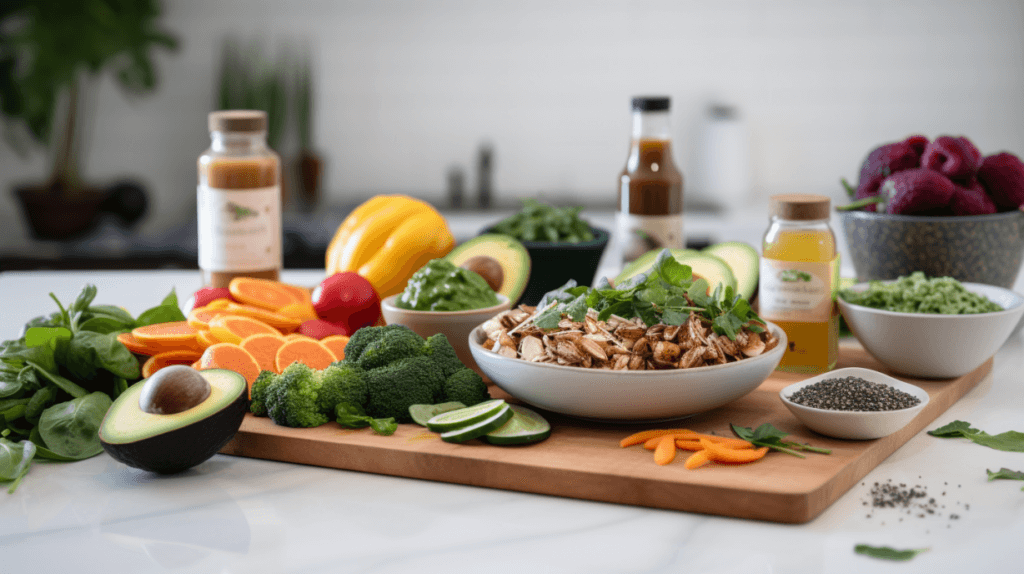
A calorie deficit is a critical component of weight loss, as it is the driving force behind shedding excess pounds. This section will examine the concept of a calorie deficit, its importance in weight loss, and how to create and maintain a calorie deficit effectively.
Understanding Calorie Deficit
A calorie deficit occurs when you burn more calories than you consume. This forces your body to use stored energy (fat) to compensate for the deficiency, leading to weight loss. You must create a calorie deficit of approximately 3,500 calories to lose one pound of body weight.
Importance of Calorie Deficit in Weight Loss
A calorie deficit is the foundation of virtually all weight loss programs and dietary plans, including the Optivia weight loss [3]. Creating a calorie deficit is essential for weight loss because it signals the body to tap into stored energy sources (fat) for fuel. Without a calorie deficit, your body has no reason to break down fat stores, making weight loss difficult or impossible.
Creating a Calorie Deficit
There are several ways to create a calorie deficit:
- Reduce calorie intake: The most straightforward way to create a calorie deficit is by consuming fewer calories. This can be achieved by reducing portion sizes, choosing lower-calorie foods, and cutting out high-calorie snacks and beverages.
- Increase physical activity: Another way to create a calorie deficit is by increasing the calories you burn through exercise and daily activities. Regular physical activity, such as walking, jogging, swimming, or strength training, can help improve your daily calorie expenditure.
- Combination of diet and exercise: The most effective approach to creating a calorie deficit is through a variety of reduced calorie intake and increased physical activity.
Maintaining a Calorie Deficit
To maintain a calorie deficit and continue losing weight, consider the following tips:
- Monitor your progress: Regularly track your calorie intake and expenditure to ensure you are maintaining a calorie deficit. Tools like food diaries, smartphone apps, and online calculators can be helpful for this purpose.
- Make gradual changes: Instead of making drastic dietary and lifestyle changes, consider making minor, incremental, more sustainable adjustments.
- Stay accountable: Share your weight loss goals and progress with friends, family, or a support group to help maintain motivation and accountability.
- Adjust your calorie deficit as needed: As you lose weight, your body will require fewer calories to maintain its new weight. To continue losing weight, you may need to adjust your calorie intake or exercise routine to maintain a calorie deficit.
In conclusion, a calorie deficit is the cornerstone of weight loss, as it forces your body to use stored fat for energy. By understanding the importance of a calorie deficit and learning how to create and maintain one effectively, you can significantly increase your chances of achieving and maintaining your weight loss goals.
Challenges and Considerations: Optivia Weight Loss
Embarking on a weight loss journey, such as the Optivia weight loss, can come with its share of challenges and considerations. In this section, we will explore common concerns, potential pitfalls, and tips for overcoming them to achieve weight loss goals.
Hunger and Cravings
It’s common to experience hunger and cravings while following a calorie-restricted diet. To help manage these challenges:
- Focus on consuming high-fiber, high-protein foods that can help you feel fuller for longer.
- Drink plenty of water to help curb hunger and stay hydrated.
- Plan healthy, low-calorie snacks to satisfy cravings without derailing your progress.
Maintaining Social Life and Relationships
Dietary changes can impact your social life, as gatherings often revolve around food. To navigate this challenge:
- Communicate your weight loss goals to friends and family so they can understand and support your efforts.
- Suggest activities that don’t revolve around food, such as walking or attending a fitness class together.
- Plan for social events by researching menu options or bringing a healthy dish to share.
Plateaus and Slow Progress
Weight loss plateaus can be discouraging, but they are a normal part of weight loss. To overcome plateaus:
- Reassess your calorie intake and expenditure to ensure you’re maintaining a calorie deficit.
- Consider incorporating new forms of exercise or increasing workout intensity to challenge your body and boost metabolism.
- Be patient and stay consistent with your efforts. Weight loss may not be linear, but persistence pays off.
Sustainability and Long-term Success
Maintaining weight loss over the long term can be challenging, especially when transitioning from a structured program like Optivia. To set yourself up for long-term success:
- Focus on developing sustainable healthy habits, such as regular physical activity and mindful eating.
- Monitor your progress and adjust your calorie intake and expenditure to maintain your desired weight.
- Seek support from friends, family, or a weight loss community to help you stay accountable and motivated.
Cost and Accessibility
The Optivia weight loss, particularly the Fueling, can be expensive [5]. To address financial and accessibility concerns:
- Research alternative meal replacement products or prepare similar low-calorie, nutrient-dense meals at home.
- Look for promotions or discounts on Optivia products to help reduce costs.
- Prioritize your spending on the most valuable components of the program, such as one-on-one coaching or community support, to maximize your investment.
In conclusion, while weight loss journeys can be challenging, being aware of potential obstacles and knowing how to overcome them can increase your chances of success. By addressing hunger and cravings, maintaining a social life, overcoming plateaus, focusing on sustainability, and considering cost and accessibility, you can successfully navigate the challenges of the Optivia diet and other weight loss programs.
Weight Loss Plateau: Optivia Weight Loss
Hitting a weight loss plateau can be frustrating and demotivating, but it’s essential to understand that plateaus are a natural part of the weight loss process. This section will discuss the causes of weight loss plateaus, strategies to overcome them, and tips to prevent future plateaus.
Understanding Weight Loss Plateaus
A weight loss plateau occurs when your progress stalls and you stop losing weight for an extended period, typically two weeks or more. Plateaus can happen for several reasons, including changes in your body’s metabolism, muscle mass, and daily calorie needs.
Causes of Weight Loss Plateaus
Some common causes of weight loss plateaus include:
- Adaptive thermogenesis: As you lose weight, your body requires fewer calories to maintain its new weight. Reduced calorie needs can make it harder to maintain a calorie deficit, leading to a plateau.
- Decreased muscle mass: Losing weight can also lead to a loss of muscle mass, slowing your metabolism and making it harder to lose weight.
- Inaccurate tracking: Over time, it’s common to become less vigilant about tracking food intake and portion sizes, leading to more calories than intended.
Overcoming Weight Loss Plateaus
To break through a weight loss plateau, consider the following strategies:
- Reassess your calorie needs: As your body changes, so do your calorie needs. Recalculate your daily calorie needs based on your current weight and adjust your intake accordingly.
- Increase exercise intensity or variety: Incorporate new exercises or increase the power of your current workouts to challenge your body and boost your metabolism.
- Focus on protein and fiber: Consuming more protein and fiber can help you feel fuller for longer, making it easier to maintain a calorie deficit.
- Track food intake accurately: Track your food intake, including portion sizes, to maintain a calorie deficit.
Preventing Future Plateaus
To reduce the likelihood of hitting another weight loss plateau, keep these tips in mind:
- Set realistic expectations: Understand that weight loss is not always linear and that plateaus are normal.
- Monitor your progress regularly: Regularly track your food intake, exercise, and weight to identify potential issues early and make adjustments as needed.
- Continue challenging your body: Regularly change your exercise routine to keep your body challenged and avoid adaptation.
In conclusion, understanding the causes of weight loss plateaus and implementing strategies to overcome them can help you continue progressing toward your weight loss goals. You can break through plateaus and maintain steady weight loss progress by reassessing your calorie needs, increasing exercise intensity or variety, focusing on protein and fiber, and accurately tracking your food intake.
Effectiveness of the Optivia Weight Loss
The Optivia diet has gained popularity as a weight loss program due to its structured approach, meal replacement products, and personalized support. In this section, we’ll examine the effectiveness of the Optivia weight loss, including factors contributing to its success, potential drawbacks, and overall outcomes.
Factors Contributing to Optivia weight loss’s Success
Some key factors that contribute to the Optivia diet’s effectiveness include:
- Structured meal plans: The Optivia weight loss provides clear guidelines for daily food intake, making it easier for individuals to adhere to a calorie-restricted diet [1].
- Meal replacement products: optivia’s Fuelings are designed to be convenient, nutritionally balanced, and satisfying, which can help curb cravings and control portion sizes [2].
- Personalized support: Optiva offers one-on-one coaching to help individuals overcome challenges and stay motivated throughout their weight loss journey [2].
- Community engagement: The Optivia community provides encouragement and support, fostering a sense of belonging and accountability that can boost motivation and success [2].
Potential Drawbacks and Limitations
While many individuals have experienced success with Optivia weight loss, there are some potential drawbacks to consider:
- Cost: The Optivia weight loss can be expensive, particularly when purchasing Fueling and other program components [5].
- Sustainability: Transitioning from a structured program like Optivia to independent meal planning can be challenging, and some individuals may struggle to maintain their weight loss long-term [3].
- Restrictiveness: The initial phase of the Optivia weight loss can be pretty restrictive, which may be difficult for some individuals to adhere to [1].
Overall Outcomes and Effectiveness
The Optivia weight loss has been shown to promote weight loss through calorie restriction, meal replacement products, personalized support, and community engagement. Many individuals have experienced significant weight loss while following the program [2].
However, it’s crucial to consider potential drawbacks, such as cost and sustainability, when evaluating the overall effectiveness of the Optivia weight loss. As with any weight loss program, individual results may vary, and the key to long-term success lies in developing sustainable habits and a healthy relationship with food.
In conclusion, the Optivia weight loss can be an effective weight loss program for many individuals, provided they are willing to invest in it and commit to long-term lifestyle changes. By considering the factors contributing to its success, potential drawbacks, and overall outcomes, individuals can decide whether Optivia weight loss is the right choice for their weight loss journey.
Conclusion: Evaluating the Optivia Weight Loss
The Optivia diet offers a structured and supportive weight loss program that combines meal replacement products, personalized coaching, and community engagement. Its success lies in the clear guidelines, convenient Fuelings, one-on-one coaching, and supportive community that help individuals stay motivated and accountable throughout their weight loss journey.
However, it’s essential to consider the potential drawbacks, such as cost, sustainability, and restrictiveness, when evaluating the optivia diet’s overall effectiveness. The key to long-term weight loss success is developing sustainable habits and a healthy relationship with food.
The Optivia diet can be an effective weight loss program for many individuals, provided they are willing to invest in it and commit to long-term lifestyle changes. By carefully considering the factors contributing to the Optivia diet’s success, potential drawbacks, and overall outcomes, individuals can decide whether this program is the right choice for their weight loss journey.
FAQs
How does the Optivia diet promote weight loss?
The Optivia diet promotes weight loss through calorie restriction, meal replacement products, personalized support, and community engagement.
What are Fuelings?
Fuelings are Optivia’s meal replacement products that are convenient, nutritionally balanced, and satisfying.
How does the Optivia diet compare to Medifast?
Both Optivia and Medifast are weight loss programs that utilize meal replacement products. However, Optivia offers additional support through personalized coaching and a community of like-minded individuals.
Is the Optivia diet expensive?
The Optivia weight loss can be costly, particularly when purchasing Fueling and other program components.
What are the potential drawbacks of Optivia weight loss?
Potential drawbacks of the Optivia weight loss include cost, sustainability, and restrictiveness in the program’s initial phase.
Reference
1.https://www.verywellfit.com/what-is-the-optavia-diet-4685284
2.https://www.optavia.com/us/en/
3.https://www.healthline.com/nutrition/optavia-diet
4.https://www.optavia.com/us/en/weight-loss-products-programs/ideal-weight-5-1
5.https://www.optavia.com/us/en/weight-loss-products-programs
6.https://www.dietspotlight.com/optavia-review/
7.https://www.goodhousekeeping.com/health/diet-nutrition/a28436828/what-is-optavia-diet/
8.https://answers.optavia.com/help/optimal-weight-5-1-plan-what-if-i-stop-losing-weight
10.https://www.optavia.com/us/en/sign-in
NOTICE
Affiliate Disclosure
The links contained in this product review may result in a small commission if you opt to purchase the product recommended. This goes towards supporting our research and editorial team and please know we only recommend high-quality products.
Disclaimer
This content including advice provides generic information only. It is in no way a substitute for a qualified medical opinion. Always consult a specialist or your doctor for more information.
While the information shared here can be helpful, please remember that it is not a replacement for advice from a licensed medical professional. If you have concerns or are taking medication, please speak with a doctor before making any decisions.
Additionally, keep in mind that individual results may vary as these products are not regulated by the Food and Drug Administration. These products are not designed to diagnose, treat, cure or prevent any disease.

